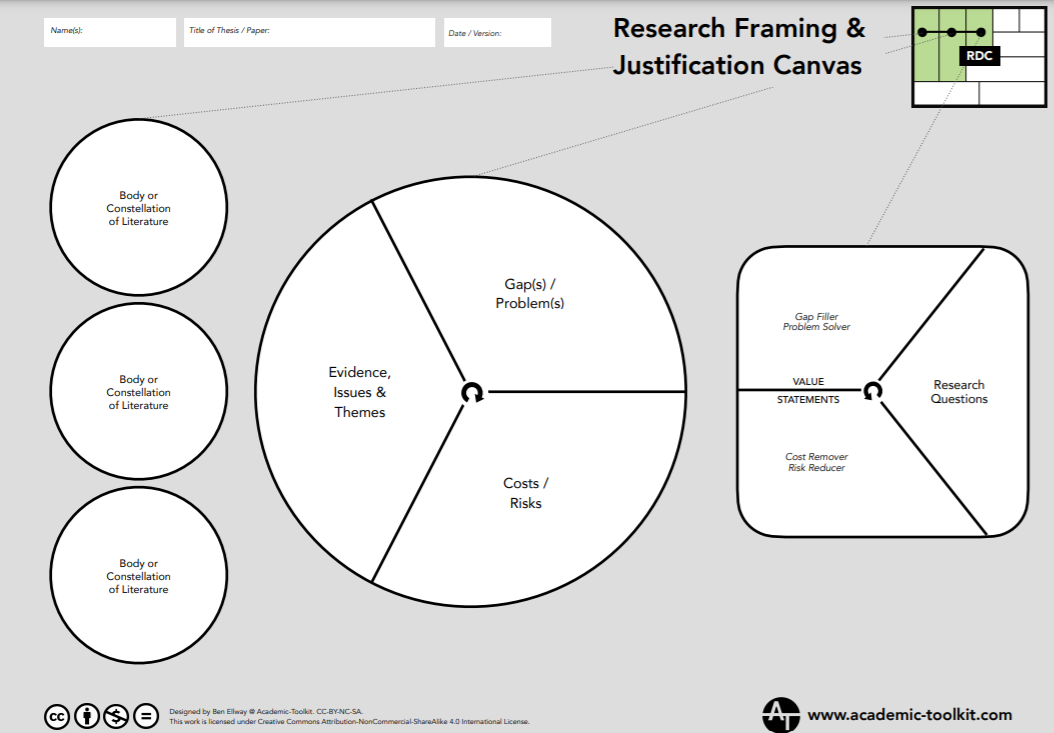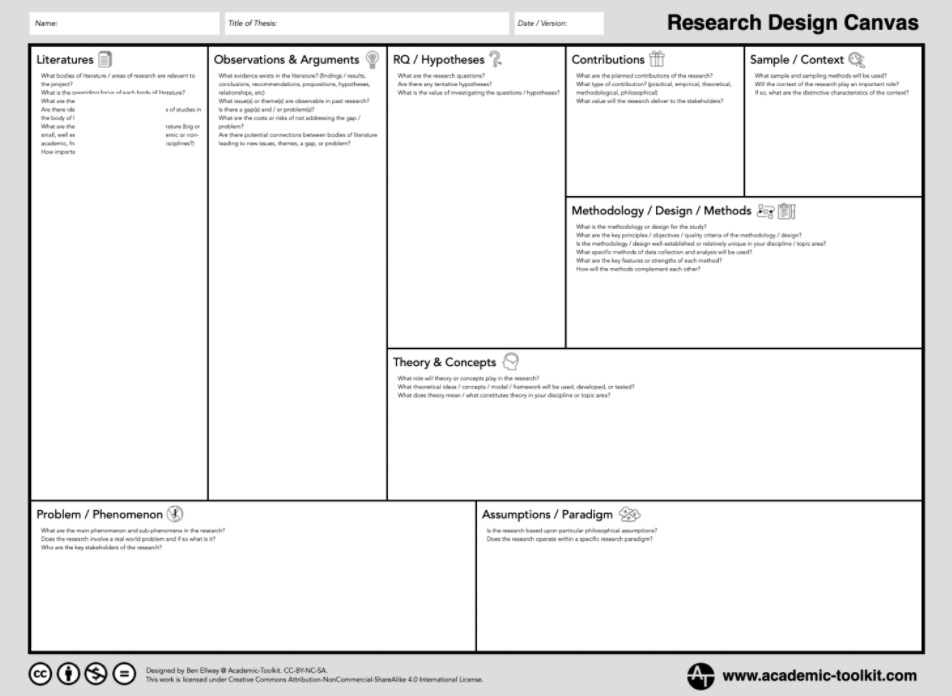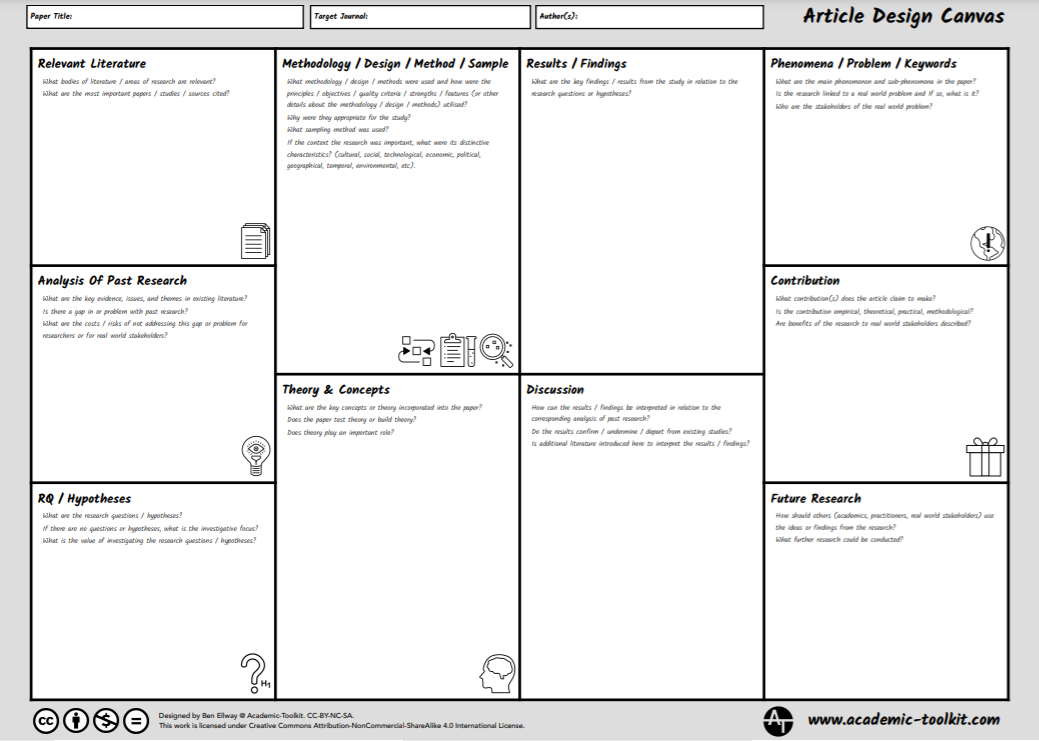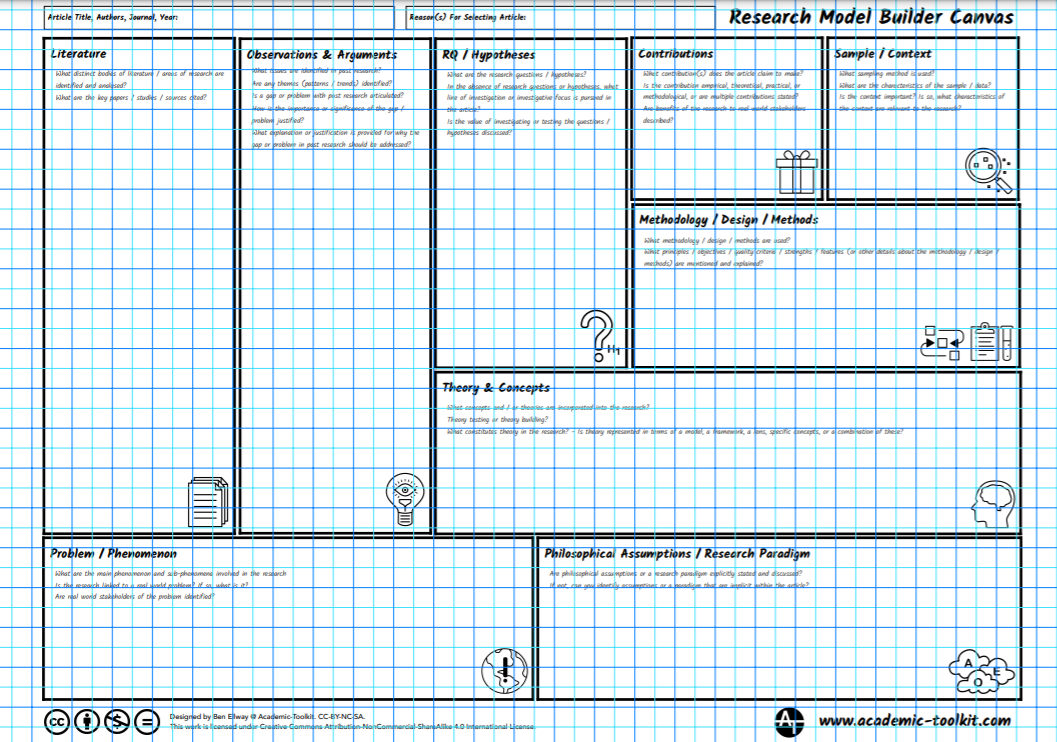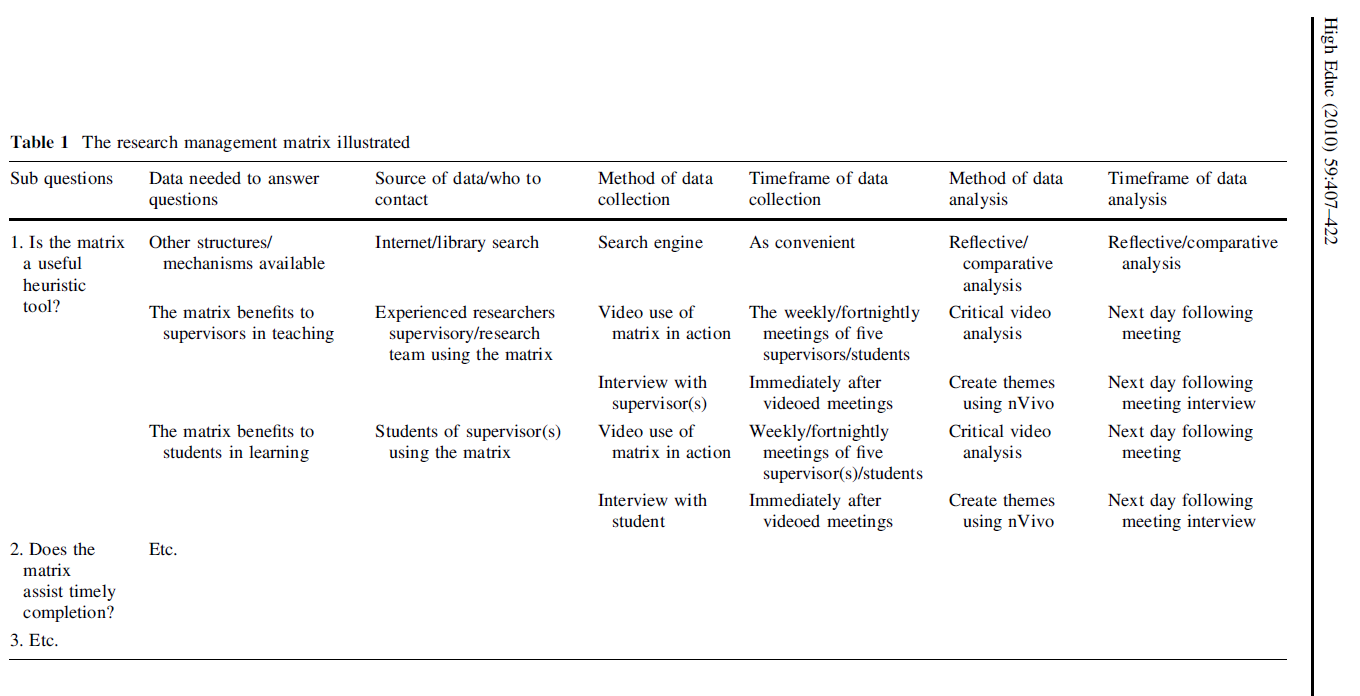Topic outline
-
Contents
- Introduction: Working with matrices
- Example matrices
- Ellway Research framing and justification canvas
- Ellway Research design canvas
- Ellway Research article design canvas
- Ellway Research model builder canvas
- Maxwell and Smyth Research management matrix
- Suggestions for use
- Students' comments
Introduction: Working with matrices
Matrices can provide a useful tool for capturing the key elements of a research text, or a section of a research text, and its associated research timelines in one or more pages for easy viewing. A matrix can include the key elements of the research story line in a journal article, or in parts of a research proposal, thesis or exegesis (such as the literature review and methods sections). Matrices can also be used to link conceptualisations of a draft plan with research timelines for practical goals and deadlines. They are perhaps most useful because they bring the relationships between elements in a research plan into focus, something that can easily be lost in large research projects.
Matrices can be used in a variety of research education contexts. They can be used as the basis of workshops, or within writing groups and supervision. They may be particularly useful for team research projects.
Example matrices
Ben Ellway provides a number of useful matrices for use by both students and supervisors on his web site at: https://www.academic-toolkit.com/tools/ Images of some of the most useful in the research writing and planning process are duplicated below and can be downloaded directly by clicking on the image or by visiting Ellway's web site.
Maxwell and Smyth (2010) provide a 'research management matrix' which links questions to data source, methods and timeframe for collection and analysis. Maxwell and Symth's matrix is useful in demonstrating how matrices can be used to link key conceptual links in the research with planning phases of research, in this case with regard to the research design. The matrix can be accessed by clicking the image below and scrolling to page 411. To view the matrix on the horizontal click the 'anti-clockwise button on the top margin three times. A word file of Maxwell and Smyth's table without content can be downloaded here: Maxwell and Smyth 2010 matrix template
Suggestions for use
- Ask the student/s to complete and forward their draft matrix prior to group or supervision meetings.
- They can use the matrices above, or adapt and create a matrix to suit a particular project or the key aspects that need to be included in your discipline area.
- Encourage development of the matrix early in the project when there are changes or clarifications within the project, and during the methodological stages of the project, when it is likely to be most useful.
- Explain that the key features of the research process should ideally be captured on one or two pages.
- Emphasise the importance of changes in one part of the matrix being reflected in the other parts of the matrix.
- Use the matrix as a device to facilitate student learning. Facilitate group meetings in which student/s share and work together to update their matrices (see writing groups working on short texts), or work on the matrix within supervision.
- Explain that the matrix can be updated, or evolve over a series, as the project develops.
Student comments (Maxwell and Smyth, 2010)
- ‘It becomes an outward and visible “road map” … I am then more able to see a way ahead that appears practical and perhaps even achievable’;
- ‘It helps me to keep on track … I find it is very important to always go back to the matrix to keep me focused on my topic within the boundaries provided by the framework’
- ‘It is not much use to me when I work on it alone. … An updated version of the matrix is usually discussed during our meetings. Then normally, new ideas, reflections and recommendations are included for further discussions, as well as directions being given for the next steps’.
- ‘Conceptualising, whilst reading the literature and reflecting on the concepts that are being integrated in one’s mind and which raise awareness that there is a genuine issue to research, comes more readily to me that working out the logistics of how to get started and keep on track’.
- ‘Working without the support of my supervisor on the matrix I pull out one strand and try to unravel that, I lose track of other strands and how each strand must fit in answering the big questions’.
- ‘The matrix was useful at all times, but particularly during the writing process. In fact the writing process was able to continue steadily throughout times when the mind was immersed in other parts of the research because the RMM allowed me to pragmatically dip in and out of the writing without losing concentration on the other parts of vice-versa’.
- ‘It took time to get it right in the first place. This was frustrating at the time, but in hindsight very, very worthwhile’.
Reference
Ellway, B. https://www.academic-toolkit.com/contact-me/
Maxwell, T. W. and R. Smyth. (2010) Research supervision: The research management matrix, Higher Education, 59 pp. 407–422.

